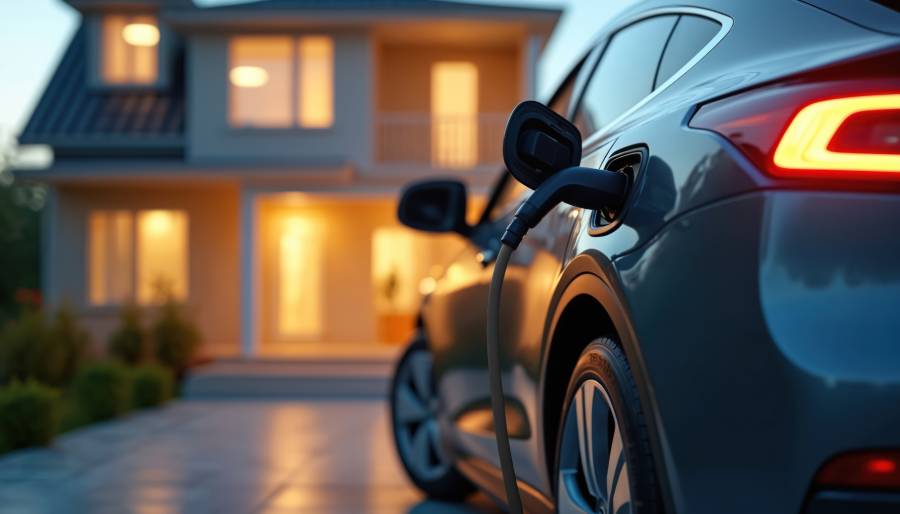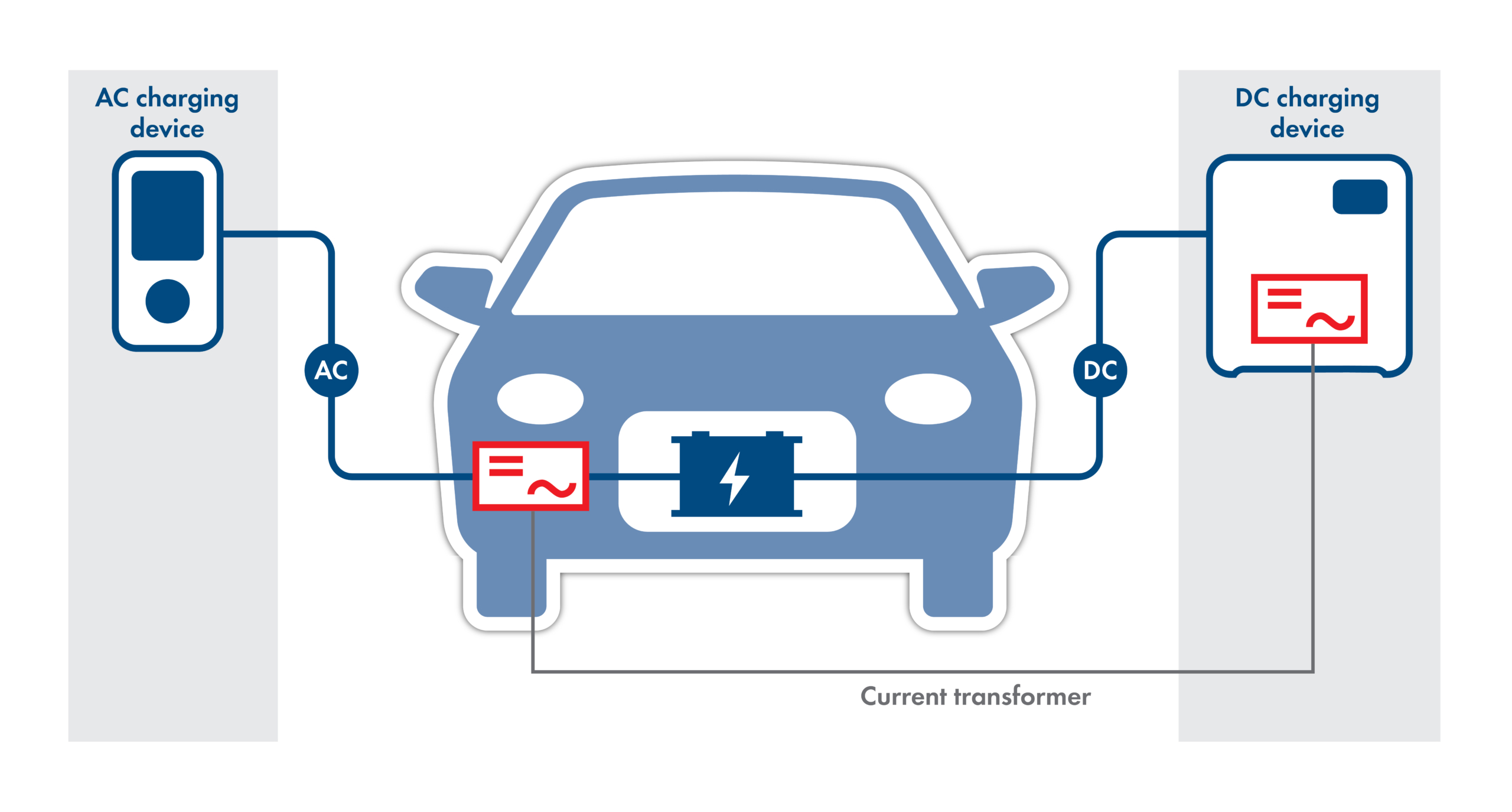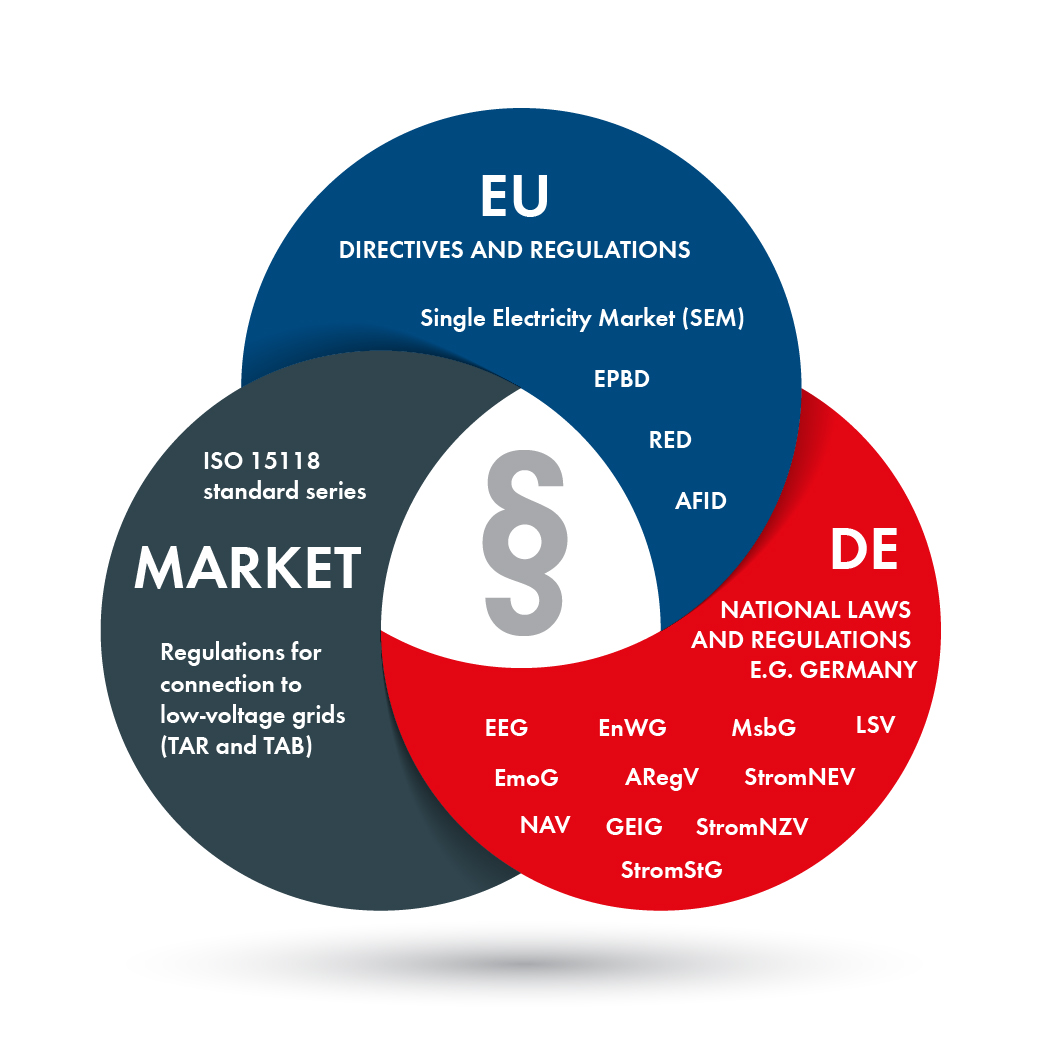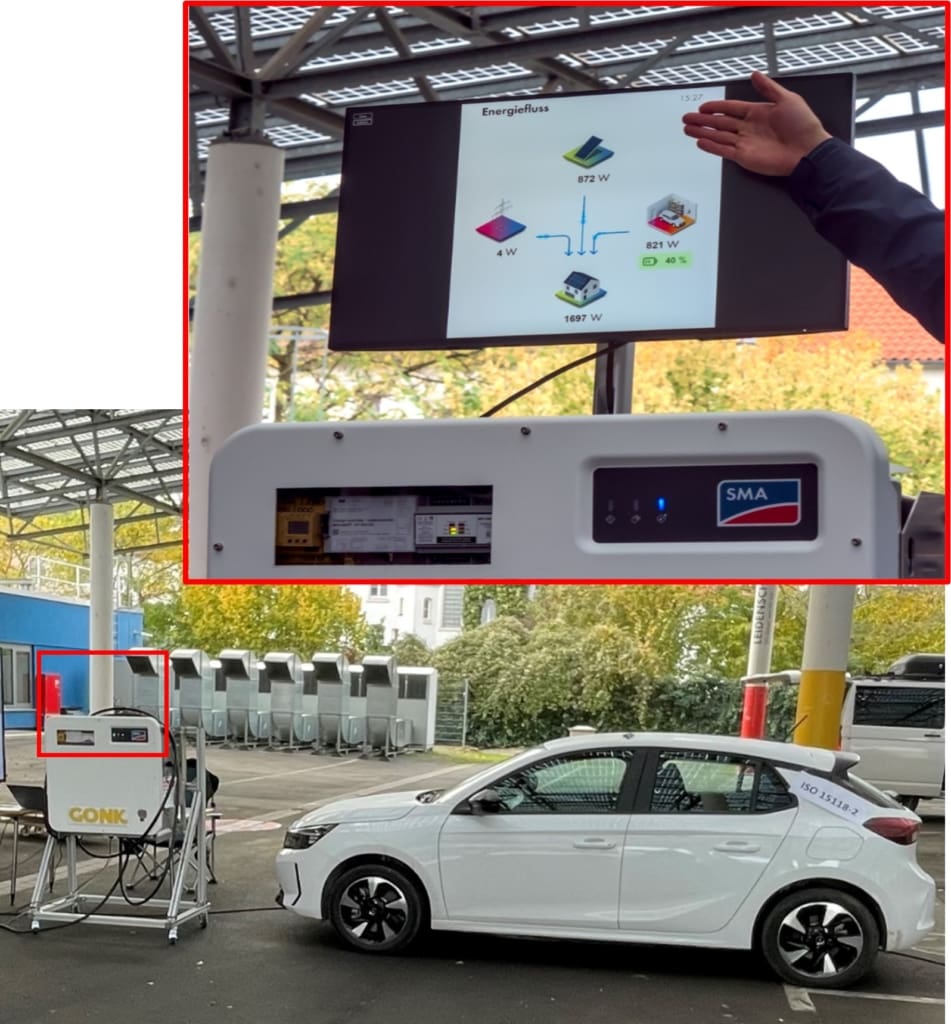How does bidirectional charging work? Learn how the vehicle battery becomes an energy storage system

Table of Contents
Bidirectional charging allows an electric vehicle not only to draw energy from the utility grid but also to feed surplus power back into it—and even supply electricity to your home. It’s common knowledge that bidirectional charging has long been hailed as a breakthrough in energy technology. But is that really true? This article explains the story behind bidirectional charging, how the technology works, and the opportunities it offers.
Electric vehicles have long since evolved from being niche products to mainstream solutions. Electric cars are becoming increasingly common on the roads.
Pairing your electric vehicle with a rooftop PV system offers a cost-effective way to charge your car at home. Since vehicles spend most of their time parked. Their traction batteries could serve as mobile home energy storage systems, making an important contribution to the energy transition.
What opportunities does bidirectional charging technology provide? What rules and requirements apply? What’s holding it back from being widely used? A look at the fundamentals of the technology, the current market environment, and where things stand with SMA.
What technologies enable bidirectional charging?
At the moment, electric vehicles are usually charged using a unidirectional process.The alternating current (AC) from the household or utility grid flows into the vehicle, where the on-board charger (OBC) converts it into direct current (DC) to be stored in the traction battery.
Unlike unidirectional charging, bidirectional charging allows electricity to flow both ways—meaning energy can be passed back and forth between an electric vehicle, a house, and the grid. This allows the vehicle to act as a mobile energy storage system, capable of powering electrical loads. An inverter is required for this conversion. Similar to PV systems, it converts the direct current from the vehicle’s battery into alternating current and synchronizes it with the utility grid. Communication between the charging station and the vehicle is facilitated by the ISO 15118-20 communication standard. Depending on the technology used—AC or DC bidirectional charging—the inverter is installed either inside the vehicle as an on-board charger (OBC) or within the charging station.
1. Bidirectional AC charging
In bidirectional AC charging, the inverter is located inside the vehicle, just as it is with unidirectional AC charging. Incorporating these on-board chargers adds to the cost of the vehicle. Although there are no explicit regulations requiring an on-board charger in vehicles, its practical importance and the flexibility it provides make it an indispensable component for now. The additional weight here is not significant.
2. Bidirectional DC charging
In bidirectional DC charging, the inverter is located inside the charging station instead of the vehicle. The effort and associated costs of mapping the country- specific grid requirements are thus shifting from the vehicle to the stationary charging station. While this reduces complexity for vehicle manufacturers, it increases the development effort for charging station manufacturers, who— because of predominantly proprietary implementations—can currently develop products only through collaboration with vehicle manufacturers.

Bidirectional charging technologies for electric cars.
What are the benefits of bidirectional charging for households and the utility grid?
Opinions differ when it comes to the technology issue. Both technologies have their own advantages and disadvantages. Given that the e-mobility market is still young and rapidly evolving, we will likely see both solutions being used for the time being.
Compared to the investment cost required for bidirectional DC charging, bidirectional AC charging has the advantage in terms of economic viability. The argument that AC charging’s power output is too low only holds true to a limited extent. Grid connection capacities are particularly limited in the home sector (point of interconnection). In this context, charging capacity of 11 or 22 kW is more than sufficient to meet all household energy needs.
It will be interesting to see which technology ultimately prevails—or whether both will establish themselves permanently. Volvo, for example, has announced that it will combine both versions in one vehicle with its EX90. In the end, the choice between bidirectional AC or DC charging and discharging lies with the user.
What versions exist for bidirectional charging?
In addition to the AC and DC charging technologies, there are also three variants of bidirectional charging.
V2L – Vehicle-to-Load
The most straightforward way to enable bidirectional charging is to use a Shuko socket-outlet in the vehicle. Loads are directly connected to this so-called vehicle-to-load function. This can also be achieved by means of a special adapter connected to the vehicle’s charging socket. The technical and regulatory prerequisites for this are already available today. Vehicle models including the Hyundai Ioniq, Kia Niro, and MG 4/5 offer this feature with an output up to 3.6 kW. This is especially practical for recharging a laptop while traveling, for campers who need power on the go, and for tradespeople who want to operate electrically powered tools.
V2H – Vehicle-to-Home
The Vehicle-to-Home function allows the vehicle’s battery to supply electricity to the entire home. The electric vehicle is connected to a bidirectional wall box for this purpose. Electricity from the traction battery can thus be fed into the house.
Potential use cases are:
- Increased self-consumption combined with a PV system: excess solar power is temporarily stored in the vehicle’s battery.
- Cost-effective use of dynamic electricity tariffs: preferred charging during off-peak times and discharging to meet household demand during peak- rate periods.
- Emergency or backup power supply with a proper grid disconnection device.
V2G – Vehicle-to-Grid
The Vehicle-to-Grid function is the most demanding form of bidirectional charging. Electricity from the vehicle battery is fed into the utility grid to help support grid stability. For this to function properly, the vehicle, charging station, and utility grid must all comply with specific requirements.
When will bidirectional charging be available?
Regulatory obstacles to bidirectional charging
Beyond the technical requirements, the greatest obstacle to bidirectional charging is political and regulatory. Prompt legislative proposals could accelerate developments. A summary of the necessary measures at the German and European levels was presented in March 2022 in the position paper “Bidirectional Charging Initiative”.

Overview of key guidelines, legal regulations, and standards; presented here as a simplified version of the original in “Bidirectional Charging Initiative Position Paper March 2022.pdf”, page 30, Figure 8.
Example 1: Warranty conditions of the traction battery
The warranty conditions of different vehicle manufacturers currently vary significantly with respect to the application of bidirectional charging. Users lack uniform and attractive use cases. For example, in Volkswagen ID models from software version 3.5 onwards, the functions of discharging and bidirectional charging are no longer available once the intended operating duration or energy amount has been reached. The following restrictions apply:
- Maximum discharge quantity: up to 10,000 kWh
- Maximum operating time: up to 4,000 hours
- Use only between 20% and 80% of state of charge (SOC)
Example 2: Burden of taxes, fees, and surcharges
According to current legislation, taxes, fees, and surcharges do not apply to electricity charged into the traction battery, nor to electricity fed back into the utility grid. Electric vehicles are only exempt from the KWKG surcharge, the offshore grid surcharge, and the §19 StromNEV surcharge when discharging. However, these account for only about 10% of the total burden. By contrast, stationary battery storage systems are exempt from electricity taxes and grid fees. Granting mobile traction batteries the same legal status as stationary battery storage systems could eliminate this unequal treatment.
Example 3: Communication protocols for control and digital market integration
The development of the communication standards between vehicles, charging systems and the utility grid is essential for widespread rollout of bidirectional charging. ISO 15118-20, the successor to ISO 15118-2, lays the essential groundwork for bidirectional charging. It expands the existing standard with features such as Plug&Charge for simplified authentication, V2G (Vehicle-to- Grid) for grid-supportive energy feed-in, and enhanced data communication.
Implementation of the standard in existing charging infrastructure is progressing very slowly, as older charging stations and vehicles are often incompatible. Furthermore, there are still uncertainties regarding the standardized control of energy flows and the grid-side requirements for bidirectional charging points.
Questions regarding data security and protection of vehicle and user data have yet to be fully resolved. When these challenges are addressed, bidirectional charging processes can be smoothly incorporated into the energy market.
When will bidirectional charging be permitted?
It is currently difficult to predict when bidirectional charging will be widely permitted and available at attractive costs. Fundamental technical feasibility has already been successfully demonstrated in various pilot projects.
Elements that are still needed for bidirectional charging to become a regular part of everyday charging:
- Comprehensive and standards-compliant solutions
- Reliable legal framework
- Appealing business models for end users
Thanks to their storage capacity, electric vehicles hold tremendous potential to support the transition to a 100% renewable energy supply and to play a key role in achieving a successful energy transition.



Feel free to contribute!